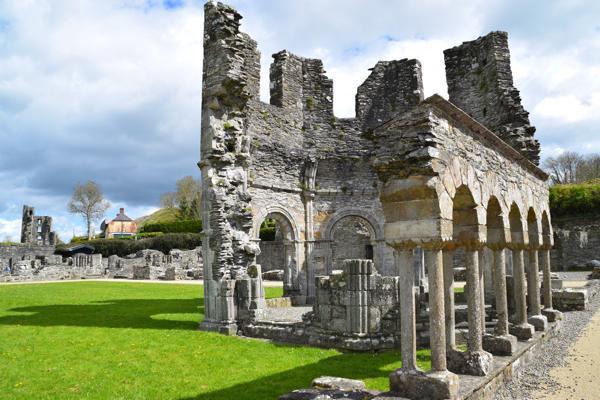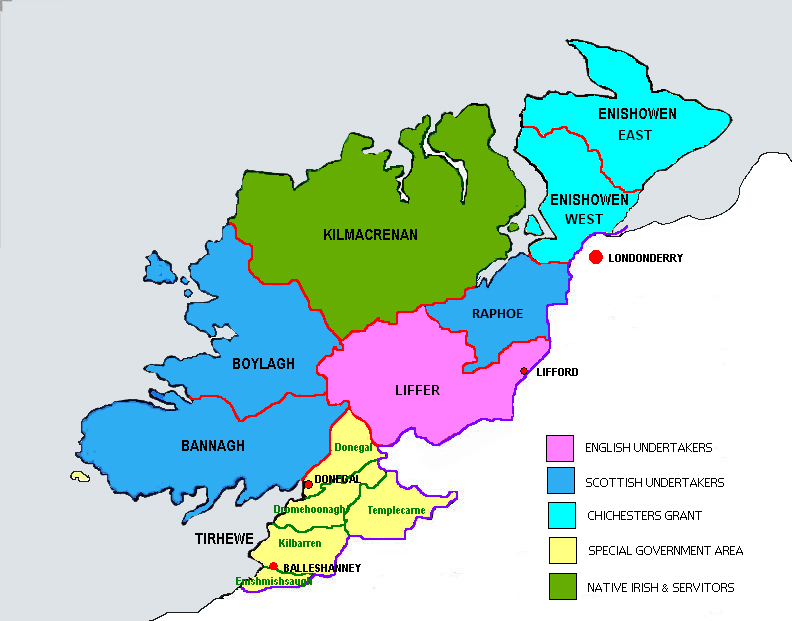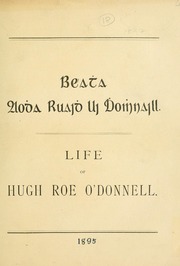In the aftermath of the defeat of the Ulster chieftains and their allies at the Battle of Kinsale in December 1601 , most returned northward and retreated into their home territories There they fought on for some time until they realised that there was no aid coming from Spain. Many lesser chiefs had already sued for peace by the time Hugh O’Neill met Charles Blount, Lord Mountjoy, at Mellifont Abbey, the home of Garret Moore, for surrender terms in the spring of 1603.

Unexpectedly the terms given seemed very generous but they had not realised that Queen Elizabeth I had died some days previous and Lord Mountjoy was anxious to make peace before King James the VI of Scotland succeeded to the English throne as James I and might have made even more generous terms with the Gaelic Chieftains, after all he had aided them overtly in their rebellion against the English.
The main leaders Hugh O’Neill and Rory O’Donnell were restored in their English titles as the Earl of Tyrone and the Earl of Tyrconnell respectively. Other minor chieftains were also confirmed in their titles but not restored to all their lands. Initially all Monasteries in Ulster were dissolved and the monastic lands were forfeited to the crown. The lucrative Cistercian Abbey Assaroe lands in south Tyrconnell near Áth Seannaigh (Ballyshannon) were offered for sale and Rory O’Donnell tried to acquire these but neither he or the Earl of Tyrone were fully trusted by the English officials. This became more acute when Charles Blount returned to England in 1605 and was replaced by Arthur Chichester whose own brother, the governor of Carrickfergus had been murdered by the McDonnells of the Glens of Antrim during the Nine Years War. He felt that many the officers of the army had not been compensated for their service during the war, whilst the former rebels had got off lightly.
In 1607 Lughaidh Uí Cléirigh, Ollamh to the Ui Domhnaills was summoned to the inquisition at “Liffer” (Lifford). Lewis O’Clery along with eleven other jurors were selected from the Gaelic nobility to act in judgement of the recent departure of Rory O’Donnell, his immediate family and followers who left Rathmullen along with the Earl of Tyrone, Hugh O’Neill and Cú Connacht Maguire Lord of Fermanagh and others .
The findings of the court were somewhat of a foregone conclusion and the Earl was dispossessed of his lands and property. Similar inquisitions were held throughout Ulster resulting in the same conclusions and opening the way for the colonisation of Counties; Donegal, Coleraine, Tyrone, Fermanagh, Armagh and Cavan in Ulster and Leitrim in Connacht which became known as the Plantation of Ulster.
In Co Donegal the lands belonging to Niall Garbh O’Donnell in the barony of Raphoe and those of Sir Cahir O’Doherty in the two baronies of Inishowen also became available after Cahir O’Doherty’s revolt and subsequent suppression in 1608.

A further inquisition was held in Lifford in August 1608 with Sir Arthur Chichester, Lord Deputy and Sir John Davies, Attorney General and chief architect of the project in attendance. The freeholders of the county, including Lewis O’Clery. listed their properties and dues.
“Herenaghs- the sept of the Cleries or freeholds
Kilbarron Parish in the said Barony contains 5 qrs. One of which is herenagh land possessed by the sept of the Cleries as herenagh who pay yearly to the Bishop of Raphoe13s 4d rent. 6 meathers of butter and 34 of meal, one qr. named Kildonnel(Kildoney?) in possession of the said sept is wholly free from tithes to the bishop, the late abbot of Asheroe was parson and vicar of the said parish in right of his house and received 2/3 of the house in kind, the remainder being payed to the bishop, the church being maintained by both according to the same proportion.

The Barony of Tirhugh in south Donegal, the mensal lands of the O’Donnells, became an area reserved for Government use. The former Assaroe monastic lands were divided between Sir Henry Ffolliott, Governor of Ballyshanny Castle who was granted the monastic lands south of the River Erne on condition he kept fifty horsemen and maintained the Castles at Ballyshanny, Bundrowes and Belleeke (the latter castle was possibly on the hill where the later Battery fort was built in the 1790s). The monastic lands north of the Erne were granted to Sir Ffrancis Gofton royal auditor and colleague of Sir John Davies (he later sold his grant to Sir Henry Ffolliott)
For a time Lewis O’Clery was left in possession of Kilbarron, and may have written the Beatha Aodha Ruaidh Ui Dhomhnaill, the Life of Red Hugh O’Donnell whilst still living there but all was to change…………….
